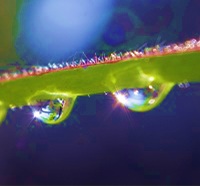Carbon based compounds.
 Molecular biology of carbon compounds in living things
Molecular biology of carbon compounds in living things
Beginning with a quick review of the terms; element, atom, molecule and ion this lesson answers these questions. What is so special about carbon and why is it found in the molecules in living things? What is "metabolism" and how do enzymes make bigger molecules from smaller ones and vice versa?
Lesson Description
Guiding Questions
- What makes carbon such a good atom in the construction of organic molecules?
- What are the differences between - elements, atoms, molecules and ions?
- What do we call all the reactions which happen in a cell?
Activity 1 Atoms molecules & ions revision and an introduction to carbon
Introduction to basic chemical ideas, atoms, molecules and ions. Simple revision notes here for non-chemists. These lead to an introduction to carbon and metabolism including anabolism and catabolism
Preview the ![]() "Revision of chemistry" presentation
"Revision of chemistry" presentation
Activity 2 IB style questions
Students test their memory and understanding with a few questions in the style of an IB biology paper two.
Teachers' notes
The first part of this lesson is really for students who don't do Chemistry. Many students find the topic about biochemistry difficult and the basic symbols and terminology can be a barrier. This introduction may help these students.
Students could make simple notes themselves from the slides or the teacher could use the slides as a beginning to some more complex ideas.
The second activity is simple an opportunity to see how much the student can remember of the presentation. It is always better to give students an activity to do more complex than writing details from a book.
There are now some model answers suggested on this page.
If there is time the structure of water molecules could also be introduced before the lesson on the properties of water. Alternatively some of the names of the various carbon based organic compounds from the next two lessons could be introduced.

 IB Docs (2) Team
IB Docs (2) Team
